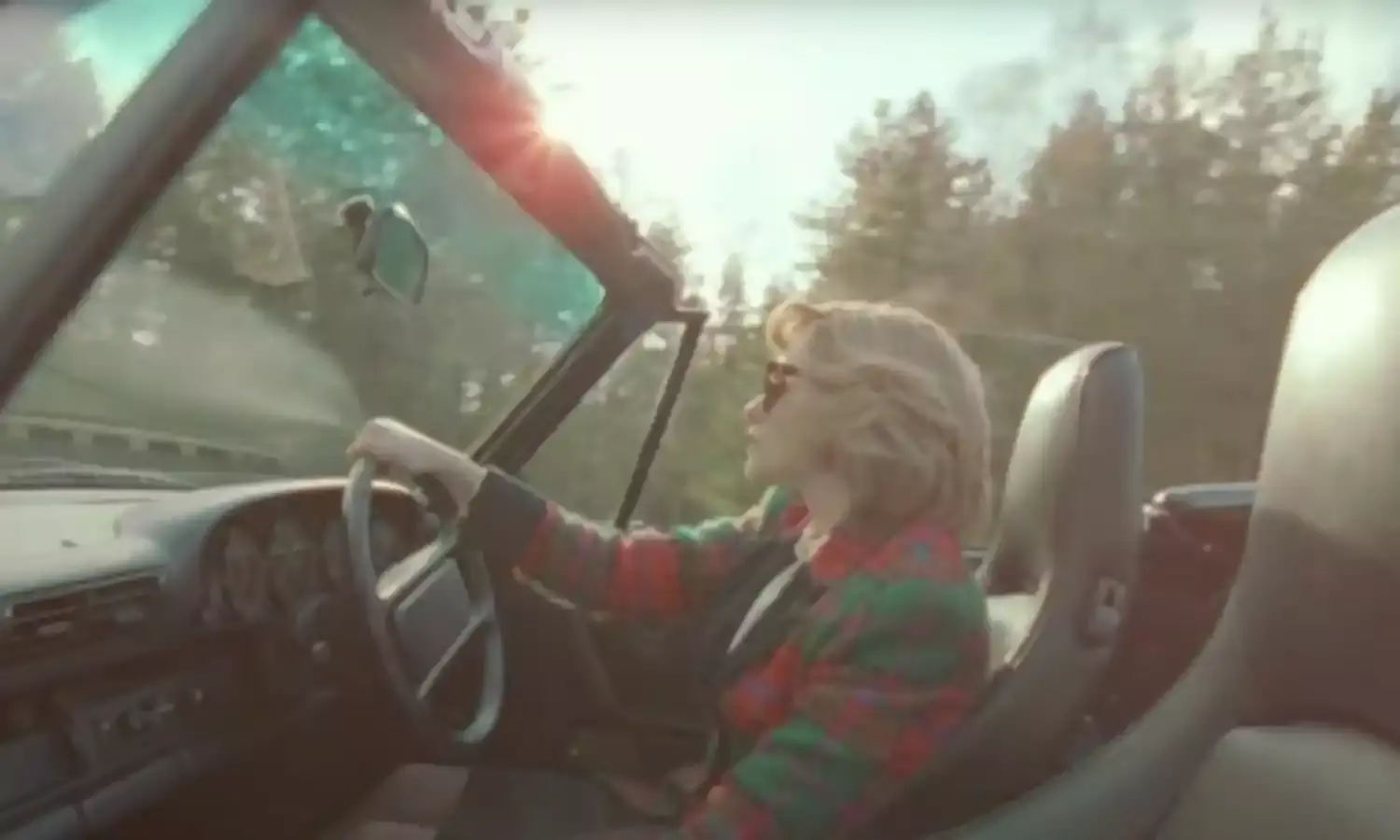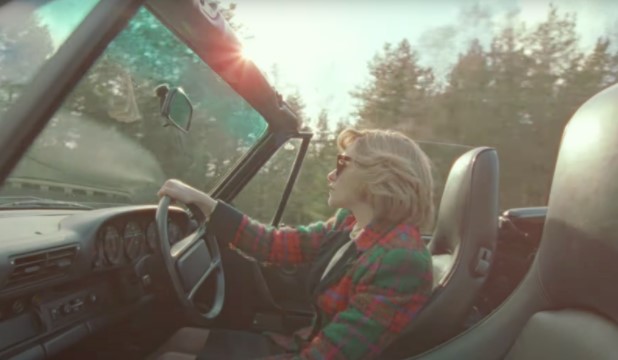Spencer: The Life of a Princess
An escape from royal obligations

The death of Princess Diana had all the marks of a Shakespearean tragedy. The inevitability of her end was presaged in the beginning; she was a persona created by the media, who finally became a person killed by the media.
At the time of that terrible event, I gathered together my chaotic thoughts in a newspaper article (“The Press and the Princess” Deccan Herald, 7/9/1997). I lamented that the press and the public had transformed Diana into the creature that suited their fantasies, so that she could hardly discover her own inclinations or true potential.
More than two decades are over, but I have not seen these sentiments echoed in any discussion about Diana's unhappy life and untimely death. The media shies away from the painful realities behind her story. Fortunately, the silence has at last been broken. Not by mainstream TV or press, but by a moviemaker, who turns the spotlight on disturbing political, professional and personal issues that have been sidestepped for too long. Issues relating to voyeurs and celebrities, to the price exacted from royal families in constitutional monarchies like the United Kingdom and the distortions and cruelties of constant media coverage.
Spencer is not a biopic in the conventional sense, since it does not narrate a story with a beginning, middle and end. We all know what happened to Diana, it is part of contemporary folklore, the challenge is to tease out the implications. Nor is the film a soap opera in the mould of The Crown, with titillating glimpses of costumes, scandals and decor.
Spencer zeroes in on a Christmas celebration at Sandringham palace in 1991, during which Diana takes the momentous decision to abandon the life of a princess and make a fresh start with her children. As she emerges from traumas, she discards her royal status and reclaims the past - Princess Diana, created by the media, reverts to the Spencer of the movie’s title.
The events of the Sandringham Christmas not only reveal Diana’s personality and the demons that torment her, they throw into relief bigger questions that concern us all. The implications of Diana’s dilemmas expand like waves through time, rippling back and forth - to the happy child and teenage bride of the past as well as to portents of her tragic death. The camera seems to stay inside her head. It tracks her memories, dreams and fears, and views incidents, events and persons through her eyes as she struggles to escape the maze of royal obligations and the pitiless public gaze.
The technique of being a princess, of managing royal status in a constitutional monarchy is spelt out to Diana by her husband Charles and by the Queen herself. In a pivotal scene, the spouses are placed at two ends of a long table as if to emphasize the gulf between them. The camera never captures the couple in a single frame; it swivels from side to side as Charles tutors the future queen on how royals should manage their personal lives. We must create alter egos and pretend-personalities to do our “duty” and meet the expectations of subjects, he explains. This is also the message given by the Queen, in her short interlude with Diana.
Those who are born into the royal family may chafe against such fetters, but they learn to cope, since their tasks and destinies are drilled into them from childhood. Those who acquire royal status through marriage will, it is expected, weigh the loss of privacy and personal freedoms against the compensations of glamour, publicity and luxurious living. But, could Diana, who was barely out of her teens when she became a princess, really know the price that would be exacted for royal privileges?
When her husband takes a mistress in the tradition of many of his ancestors, she is indeed alone, lost in gloomy, labyrinthine, vacant spaces. The only shafts of light in these sombre surroundings are the moments spent by the young mother with her sons; their laughter and games brighten up the palace and relieve her pain.
Diana seeks advice, but not from members of the royal family, even though they share the same predicament. To her they are merely blurs on the horizon, who have coped with the situation by leading a double life following the dictates of “duty”. Diana finds affinity instead with the ghost of another unhappy and unwanted queen, Anne Boleyn, who was beheaded on the orders of the monarch Henry VIII. She also turns towards her “subjects” and spends long hours with the equerry, the head chef and her favourite lady-in-waiting, Maggie, struggling to understand their expectations. The “commoners” around Diana are perceptive and affectionate, but it is she who must ultimately tread the maze and find her own answers.
The movie closes with Diana’s escape from royal obligations, an action that also liberates her from the physical distress of the bulimia triggered by her troubles. The princess-to-commoner transformation is complete when she identifies herself as Spencer to pick up a takeaway meal at a diner, on her drive away from the palace.
The other Windsors are not presented as a bunch of villains united against Diana, the cuckoo in the nest. Nor is Diana portrayed as a rebel or a feminist. We are merely reminded that there are two paths out of the common problem. Royals who put on a public front and conceal their own needs and inclinations are lauded by the press and the public. But, those who opt out of ceremonial duties and guard their privacy find few supporters.
Diana’s sons and their wives have themselves gone down different roads. William and Kate are widely admired for conforming to public expectations, while Harry and Megan are ridiculed and condemned, particularly by the conservative press, for laying down the hereditary burden.
This is not a problem that is likely to go away. Royals in other constitutional monarchies too are choosing to live as commoners by abdicating their positions. The recent dramatic exit of the Japanese princess Mako from the succession line to the Chrysanthemum Throne shows that such conflicts are not confined to Britain alone. There is a larger question: In this democratic age, should those who are members of royal households by an accident of birth be reviled for laying down their responsibilities as heads of state?
From the beginning, the Diana story was a bonanza for the press. Here was a beautiful girl with star quality suddenly elevated to the status of princess with pomp and ceremony. The tale was served up by the media to a ravenous public, duly embellished to satisfy the fantasies of the audience. A celebrity acquires cult status when press and public collaborate perfectly. The media create public taste and then they dish out what viewers crave. From the press’s point of view, the Diana story was the gift that would never stop giving. There would always be slavering viewers for what she did and for what happened to her.
And so Diana was endlessly hounded and speculated upon. The movie Spencer draws attention to the horrors of such persecution when it shows Diana flinching from a crowd of spectators and cameramen. We remember where the cruel intrusion would end - in the bodies of Diana and Dodi al Fayed caught in the mangled remains of a speeding car in a traffic tunnel in Paris as they fled from the press in 1997.
We are reminded too that the press has not yet issued mea culpas for its share of the guilt. Nor has it done any soul searching about how to limit the violation of privacy when celebrities are spied upon. Editors and journalists only parrot the press freedom argument - the contention that those who seek publicity have bartered away their right to privacy and must now take whatever the media throws at them.
In Britain, the defence of unrestricted press coverage has been particularly ferocious. But the Diana episode was not an unfortunate exception, a rare occasion when normal press behaviour went horribly wrong. It’s not the yellow press or the paparazzi alone who descend to shameless exploits. The worst example was set by the hoary BBC; after a long battle, Diana’s brother, Earl Spencer has succeeded in getting Lord Dyson to expose its senior producer, Martin Bashir, for forging material to hoax Diana into believing that the royal family were spying on her, to get the tete-a-tete interview on the Panorama program that blew open the scandal of her marriage.
The manner of Diana’s death is a taint on the journalistic profession itself. This film must prick the consciences of all mediapersons.
Spencer makes clever use of symbols and portents to highlight Diana’s situation and hint at the looming tragedy. In the opening scene, a fat pheasant is crushed beneath the wheels of a vehicle in which the kitchen crew motor into Sandringham to prepare the Christmas meals - a fitting introduction to the royal victims who will gather at the palace to be fattened for public slaughter. Towards the close, the princess gropes her way through a maze in the palace garden, as she grapples with difficult decisions.
The most successful symbol of the movie is the scarecrow that mesmerizes Diana. It beckons her on arrival - she sneaks out of the palace at night to visit it. Its borrowed robes are a reminder of the constant roleplaying that is part of royal life. Which is why Diana will mark her liberation at the end of the movie by draping the scarecrow in her finery.
There are also ominous portents scattered throughout the movie. As, for example, the car in which Diana zooms into Sandringham after losing her way and in which she departs so optimistically with her children - a clear pointer to Death waiting in the wings in another speeding car in Paris.
Enactment of the title role of Diana is a tour de force. Kristen Stewart has captured the famous smile and the slant of the head and added the princess’s pathos, loneliness and gaiety. But, British film institutions like BAFTA seem reluctant to recognize this masterly performance, particularly in a year awash with images of a stoically dutiful widowed Queen Elizabeth in the platinum jubilee of her reign. Stewart might get fairer treatment from critics across the Atlantic, where she has been nominated for the best actress Oscar.




